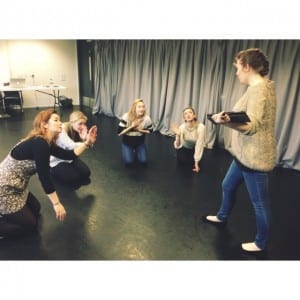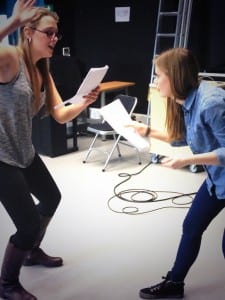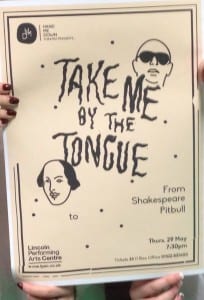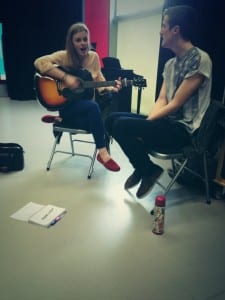Working as a company that deal with various texts, ranging from speeches to lyrics; it is our mission statement that any form of text is able to be decontextualised. Looking closely at children’s texts, it is obvious that there are morals and themes underscoring many books and nursery rhymes, and so the concept of bringing a children’s book to life was emerged. Reading the notorious ‘The Very Hungry Caterpillar’ by Eric Carle, it was clear that the repetitive formation of the text that is at face value, surrounding the subject of hunger, had the potential to be adapted theatrically given the storytelling tone throughout.
http://youtu.be/_4HI7q38VmQ
We also felt from the text that there is a sense of preaching, whereby this caterpillar is a symbol of gluttony and rebirth (as the transformation is towards a butterfly), and therefore staging the scene as a spiritual style ceremeony seemed fitting. Yet as Director, I wanted to make it clear that our interpretation of the text and of this ‘hunger’ that the caterpillar is experiencing can be perceived as a search for something that cannot be fulfilled, or even that this sense of gluttony is a metaphor for wealth/fame/power (intentionally preceeding the following ‘Fame’ scene). Thus staging the narrator as one performer on a platform, whilst 7 other performers made their way from the surrounding stage towards the ‘Preacher’ as the text proceeded would look aesthetically effective, as would be the case where all attention is on the speaker as in a ‘spiritual ceremony’. However without making the transition from religious connotations to explicitly religious, it was important that I maintained the physicality of this scene as suggestive and relevent to the metaphorical aspect we identified.




